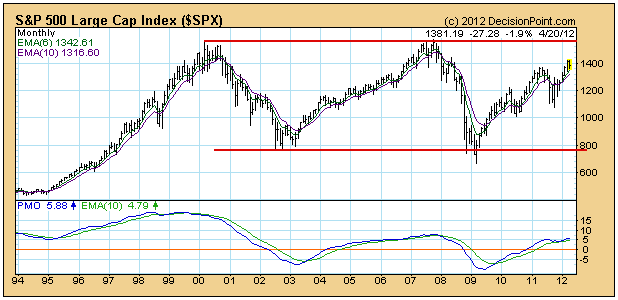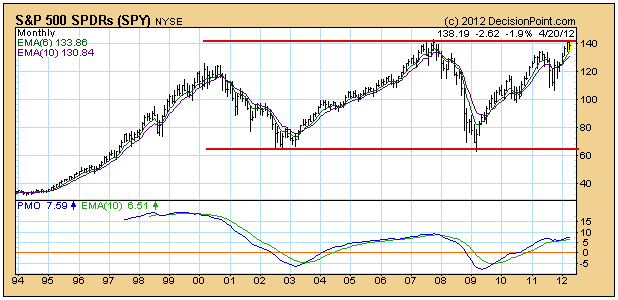A subscriber brought something to my attention that I wish I had thought of before. We think (at least I did) that the SPY (ETF) and SPX (S&P 500 Index) perform pretty much the same except for some minor tracking error. However, this is not the case because the SPY historical data is adjusted for dividends, whereas the SPX is not.
For all practical purposes, the SPY is a stock, and when the SPY pays a divdend, its historical data must be adjusted so that it maintains the correct relationship with the current dividend adjusted price. This happens on all stock, ETF, and mutual fund data. (To learn more, click here.) While it may be technically possible, historical data for an index like the SPX is not adjusted for dividends, so the effect of dividends is not considered for indexes.
Let's take a look at what this means. On this SPX chart we can see two major tops, 2000 and 2007, challenging the same level of overhead resistance at about 1550. The top of the current bull market is still about 200 points below this resistance.
Now, looking at the SPY chart, which has been adjusted for dividends, we can see that the 2007 top exceeded the 2007 top by about 15%. And of more immediate interest, the current bull market top is virtually equal to the 2007 all-time high. This encounter with long-term resistance could spell immediate trouble for the bull market.
There is a new index, the S&P 500 Total Return Index ($SPXTR), that appears to accommodate dividends by using a positive adjustment to the current price, but there is not even a full year's data collected on it yet, so it is not likely to be a useful technial analysis tool during my lifetime. Besides the SPY already does the job and we have nearly 20 years of data on it.
Conclusion: The fact that indexes are not adjusted for dividends can cause them to present a different technical picture than their ETF counterparts. While many of our timing models are driven by indexes, one should always use the chart of the trading vehicle (ETF) to finalize a trading decision.








